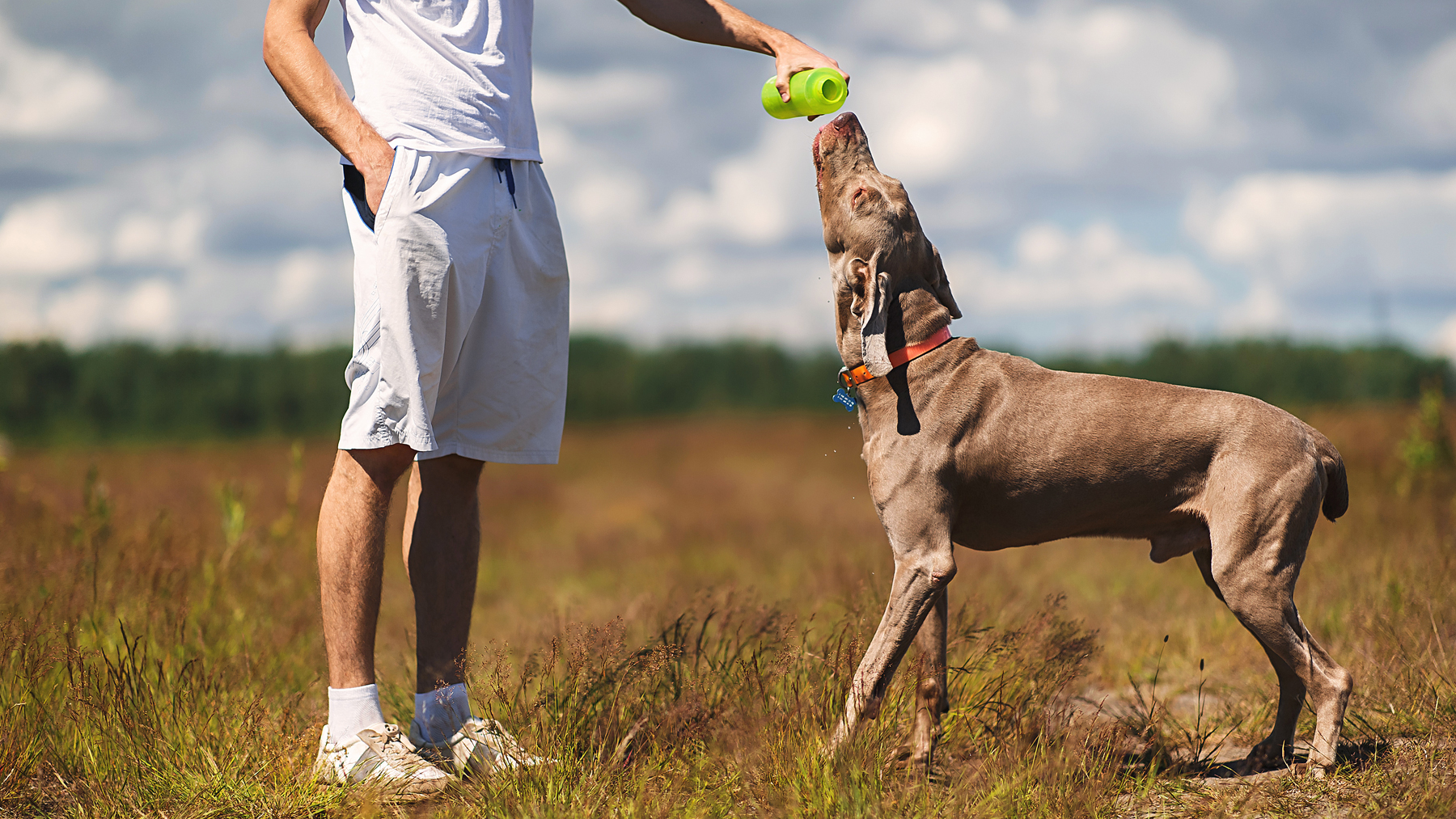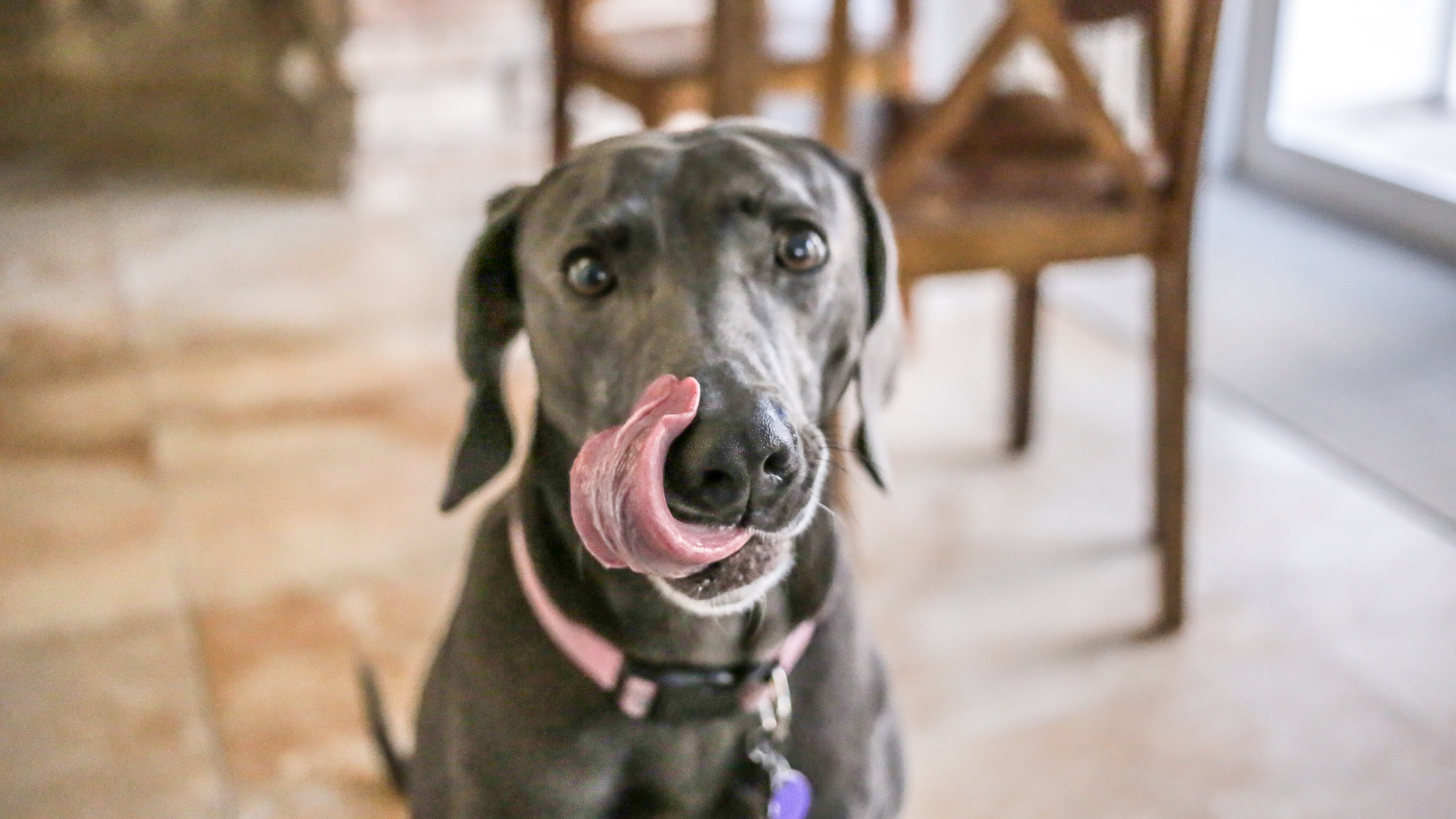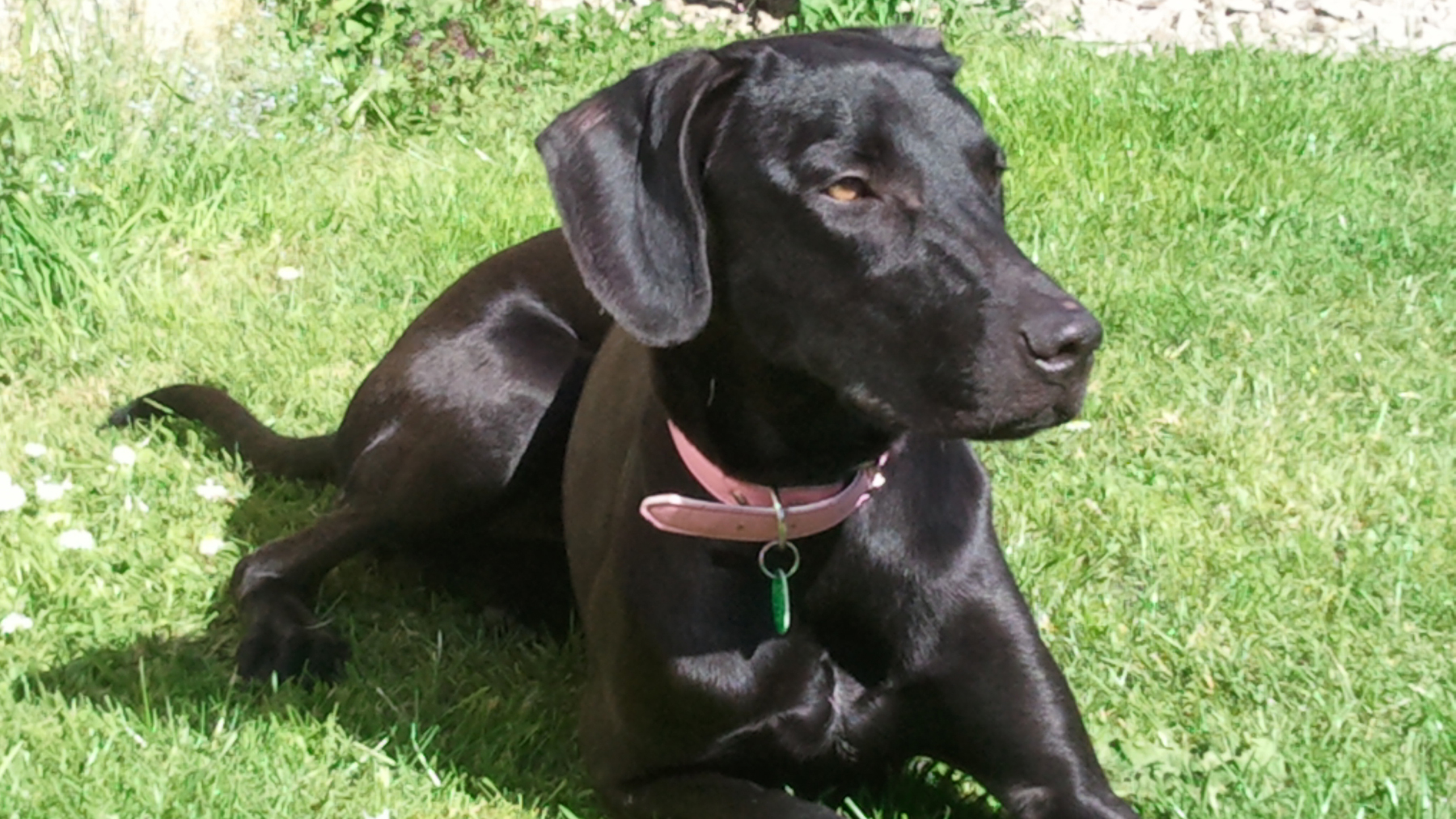I trained as a dog behaviorist to better understand my reactive dog, and it totally transformed our bond
The important things I learned through dog behavior training and how I helped my reactive dog to become happy and calm

Poppy was a big black seven month old Weimaraner cross rescue dog when I brought her home. I loved her from the minute I met her. However, after she pulled me to the floor for the second time, I knew something needed to change. I cracked three ribs and couldn't breathe properly for weeks.
Despite having owned dogs for forty years, I was unprepared for her extreme behavior. I tried working with dog trainers, but whilst they knew how to train a dog, they didn't know how to manage and overcome Poppy’s most challenging behaviors.
Recognising the problem
We lived in a remote village and rarely saw people during our walks, so it took a while before I realized Poppy had a reactivity problem. At first, she seemed nervous and unsure about strangers, but her behavior escalated fast.
When she saw a person or a dog 300 yards away, Poppy would lunge and bark. At first, I tried to calm her and be firm, but nothing worked. I struggled to hold her as Poppy had phenomenal strength and would only calm down once the person disappeared.
Every interaction Poppy had with others was challenging, and I was out of my depth. In despair, I searched for dog behaviorist training and found a certified dog behavior course by Sarah Whitehead, who trained with the late John Fisher of "Think Dog."
Training as a dog behaviorist was the best thing I ever did. Here’s what I learned that transformed my relationship with Poppy…

Jan is a dog behaviorist and writer living in the Cotswolds, UK. She has shared her life with dogs for over fifty years and is fascinated by behavior. She enjoys helping people better understand their dogs to develop a deep bond and enjoy time together. Jan particularly enjoys working with impulsive and reactive dogs as her legacy from helping Poppy, her rescue Weimaraner cross overcome fear reactivity.
Understanding reactivity in dogs
When a dog is reactive, some owners and dog trainers label the behavior as aggression. However, each dog is different and needs individual assessment. There are many causes for reactivity in dogs but from my personal experience as a trainer, fear is often the root cause of reactivity.
Get the best advice, tips and top tech for your beloved Pets
Each dog has a specific "trigger" and trigger distance. A trigger is the thing that causes the dog to react. It could be a bike, a dog, a person or something else. Some dogs respond within a few yards of the trigger, and others get stressed when they see potential "danger" on the horizon.
Some dogs are naturally nervous, and others may have missed early socialization. Conversely, too much early socialization can cause fear reactivity. It's essential to carefully monitor puppy socialization sessions to spot when a puppy gets overwhelmed.

How this helped train my own dog
The dog behavior training took several months and challenged my beliefs about judging "bad" dog behavior. I'd always used positive reinforcement but came to appreciate a worldview from a reactive dog's perspective.
I began noticing Poppy's micro signals before her behavior exploded, such as the following:
- Wide eyes
- Fur standing up
- Rigid ears instead of being floppy and relaxed
- She became taller and hyper-focused on the "trigger"
When you have a reactive dog, it's easy to become caught up in anticipation of the behavior and miss these early signs of agitation.
That one snippet of knowledge can help you better manage your dog's behavior.
The first step was to increase the distance between Poppy and the trigger. So, when we saw someone on the horizon, I would say, "This way, Poppy", turn around and walk the other way. I used a cheerful, upbeat tone as if nothing was wrong.
The first time I did this exercise, I cried. Poppy looked up into my eyes with a big toothy smile, and her entire body relaxed. That was the beginning of a huge change in the dynamics of our relationship.
For almost a year, I'd been embarrassed by Poppy's behavior, feeling like I'd failed as a dog owner. My previous dog, Cassie, was perfect, never putting a paw out of place. Now, my sole job was to protect Poppy so she knew she could trust me to keep her "safe."
One of Poppy's issues was uncontrollable barking when we had visitors, especially when they got up to leave. Now, understanding this behavior, I asked visitors to ignore Poppy, to not talk to her, touch her or make eye contact. It took time, but that exercise helped a lot. Read up on reasons why your dog barks at everything (and how to stop it) if your dog’s vocal outbursts are a problem.
I'd love to say the results from understanding how to manage and retrain a reactive dog happened quickly. In truth, it took around eighteen months before the differences massively improved. However, the changes were incremental, and I took every opportunity to shape Poppy's behavior.

What worked in Poppy's training
- I talked less
- I perfected her heel work
- I used the best dog treats
- Praising the slightest effort
- I stopped worrying about people's opinions
- I taught her to look at me instead of the trigger
- Poppy wore a dog headcollar for my physical safety
- If I couldn't see 200 yards ahead, Poppy stayed on the lead
- Teaching her to sit when I stopped walking, as sitting is a calming behavior
- Walking Poppy separately from my other dogs to give her my full attention
- I encouraged visitors to meet, greet and play ball with Poppy in the garden, which was less intimidating for her
Eventually, Poppy's behavior improved so people and dogs could walk next to us. It was lovely that many people commented on how nicely behaved my dogs were (I had four at the time).
My biggest takeaway from the experience is to talk less to dogs while training. They switch off when we chatter. Also, be aware of your stress levels. Whatever you are feeling travels down the lead. Be patient and wait for a dog to offer a behavior, instead of repeating vocal instructions. It's like a beautiful silent dance that a dog understands.
I'm in no rush to get another reactive dog, but my experience with Poppy made me a better person and dog trainer. My dog went from being a distracted, stressful mess to becoming happy, well-balanced and focused on me.
I lost Poppy in 2021, and I miss her every day. She grew into a cuddly, playful, calm dog, and everyone she met fell in love with her.

Jan is a dog behaviorist and writer living in the Cotswolds, UK. She qualified as a dog behaviorist in 2012 after training with Sarah Whitehead, a Certified Clinical Animal Behaviorist with a MSc in Animal Behavior. Jan has shared her life with dogs for over fifty years and is fascinated by behavior. She enjoys helping people better understand their dogs to develop a deep bond and enjoy time together. Jan particularly enjoys working with impulsive and reactive dogs as her legacy from helping Poppy, her rescue Weimaraner cross overcome fear reactivity.
